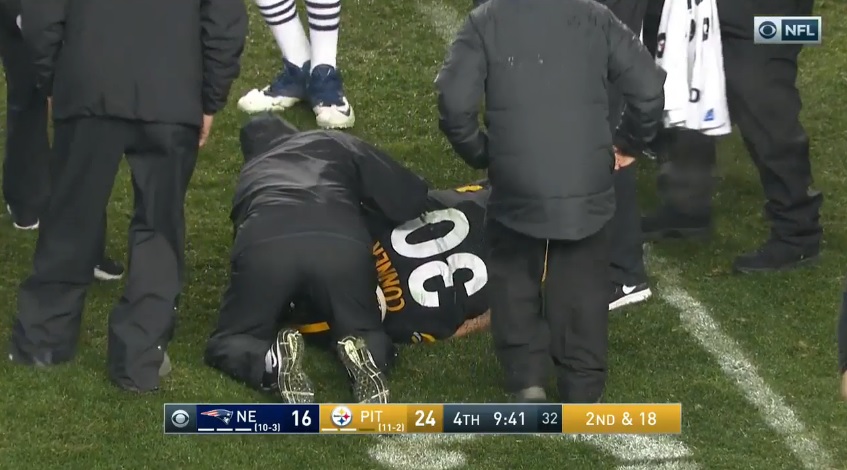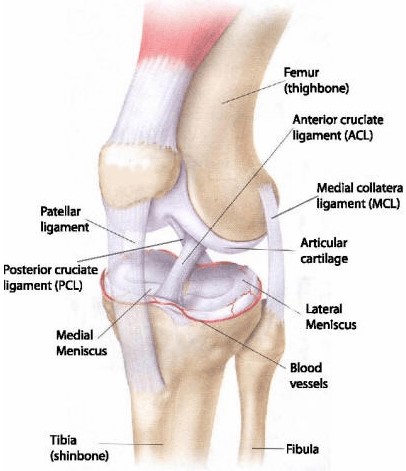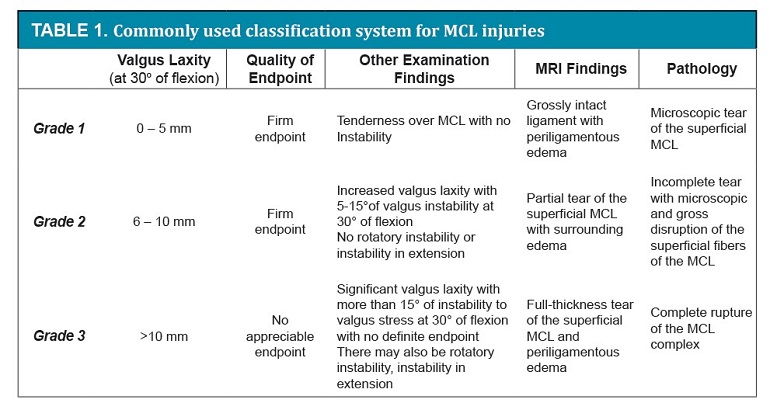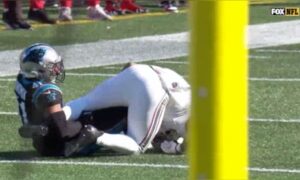In their Sunday matchup with the New England Patriots, the Pittsburgh Steelers saw a few nice runs from rookie RB James Conner. Unfortunately, he went down with a knee injury in the second half with what was reported to be an MCL injury. Although the most common knee ligament injury, MCL injuries rarely require surgery. Despite that, it really didn’t seem like the timing would allow Conner to avoid IR, as I mentioned at the time:
So we were all a little surprised when word broke the following day that Conner would need a surgical repair:
With the regular season ending in a mere 2 weeks and playoffs around the corner, there was never a chance that Conner would make it back to play this season. But if the Steelers can’t get a long-term deal done with the superhuman Le’Veon Bell (who wants to be paid as a RB and a WR) and they decide not to franchise tag him again, Conner may be moving up the depth chart to become the starting RB in 2018. And so even though the rookie’s season may be done, his future becomes a key to the Steelers plans.
I’ll cut to the chase – Conner should have a full recovery.
(And just to clarify, there is no such thing as an injury-prone player. Some get unlucky and and often in the line of fire due to the position they play.)
So why did Conner need surgery? As always, a quick anatomy review first:
The knee joint is stabilized by 4 major ligaments: the anterior and posterior cruciate ligaments (ACL and PCL) and the lateral and medial collateral ligaments (LCL and MCL):
As you can imagine, the LCL and MCL stabilize the knee joint on the two sides. The medial and lateral meniscus are cartilage that serve as a cushion inside the knee joint.
The mechanism of an MCL injury is a force that pushes on the lateral side of the knee. In this schematic, the ACL is also torn, which can happen (but fortunately didn’t for Conner as far as we know):
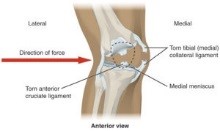
2 (www.recoverypt.com)
As with many injuries, the MCL is categorized as a Grade 1, 2 or 3 injury depending on the extent of the tear:
In this schematic, you can see that the difference between a Grade 2 and a Grade 3 injury is also defined by whether both the superficial and deep layers of the MCL are torn:
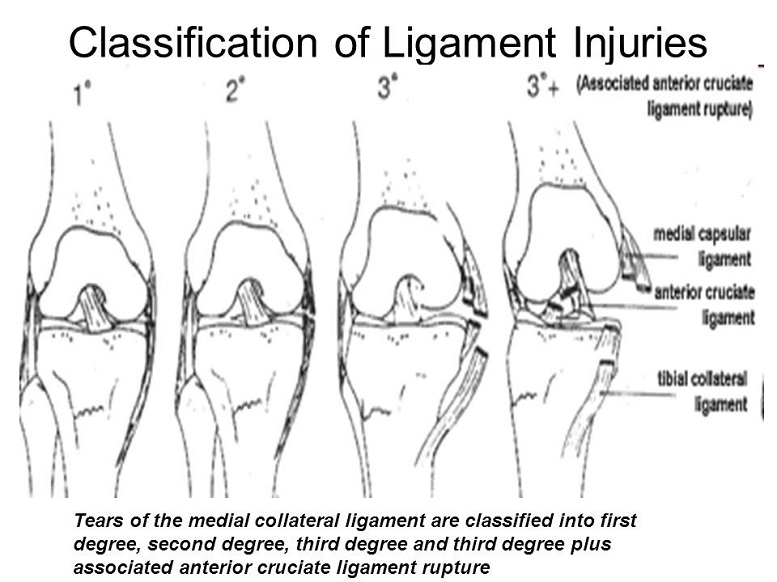
3 Injuries of the Knee (Dr. Sanjeev)
Grade 1 injuries are pretty mild and most NFL players will be back on the field in 1-2 weeks. With a Grade 2 injury, it is typically a 3-4 week recovery. I talked about this with regard to Ben Roethlisberger, who also had an associated bone bruise in 2015. Even isolate Grade 3 injuries typically do not require surgical repair because the two torn ends can scar back together. This can take 6-8 weeks.
When a player requires surgery for an MCL injury, it usually means that either another ligament or a meniscus was also damaged. When Bell’s season was ended courtesy of Vontaze Burfict in Cincinnati, he also sustained a PCL injury, and that is why he required surgery.
Harvard Medical School did a nice review of the medical literature and also looked at a single orthopaedic surgeon’s series of MCL injured patients from 2001-2011 at the Sports Medicine Center of the Massachusetts General Hospital. They looked at all patients with an MCL injury, whether other ligaments were injured or not. Here is the breakdown:
As expected, very few patients with isolated MCL injuries underwent surgery:
Almost all operative cases had more than one incompetent ligament at the time of injury.
- • Isolated MCL injury: 2 out of 19 (10%)
- – Both patients with isolated MCL injuries had undergone a prior remote ACL reconstruction and had no history of previous MCL injury.
- – Injury to the posteromedial corner was also diagnosed in both cases.
- • ACL + MCL combination: 7 out of 19 (37%)
- – One patient in this group had a remote ACL reconstruction and MCL repair. He sustained a new injury and ruptured both the ACL graft and MCL repair. He underwent repeat ACL reconstruction and MCL repair, but the revision MCL repair failed and he required MCL reconstruction.
- • PCL + MCL combination: 2 out of 19 (10%)
- – Both patients had chronic injuries (time from injury to surgery was more than 9 months in both cases).
- • ACL/PCL/MCL combination (all were documented dislocations): 5 out of 19 (26%)
- • ACL/PCL/MCL/LCL combination (all were documented dislocations): 3 out of 19 (16%)
With all of that in mind, it won’t surprise me if some small report leaks in the next month or two (as it did with Bell) that Conner had more than just his MCL repaired. Either way, expect a 4-6 month recovery process, which means that Conner may even be able to participate in OTAs in the spring.
The good news? We can still expect a complete recovery with no long-term deficit. And if you need proof of that, look no further than the NFL’s leading rusher. He’s the starting RB for the Steelers.

